Farming’s balancing act
4th April 2024
Are schemes such as SFI and Countryside Stewardship making it possible – and profitable – to produce food and care for the natural environment? Sarah Juggins investigates.
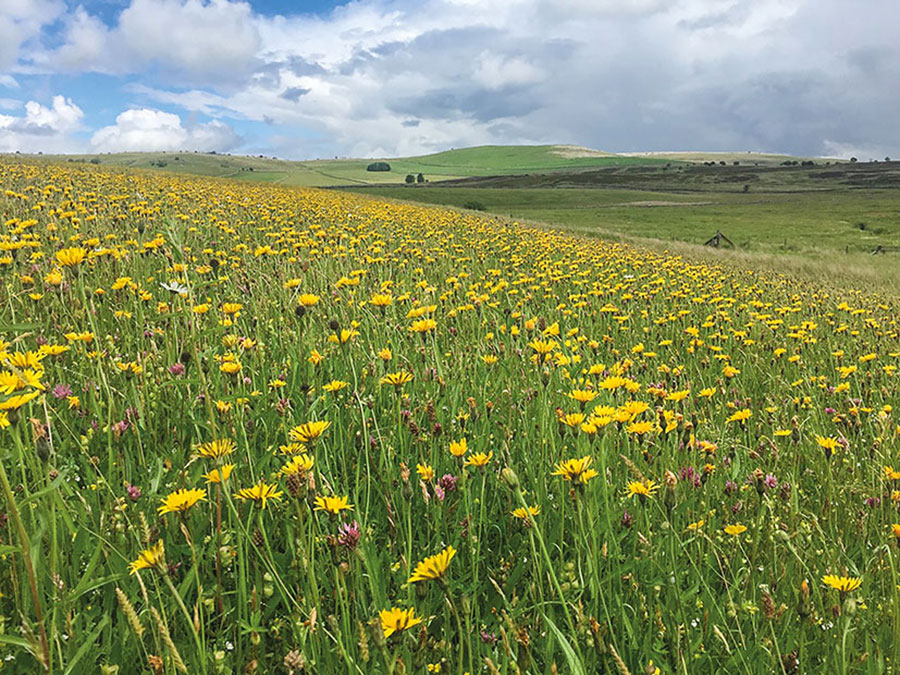
Government intervention in farming is nothing new. Enclosure Acts, Corn Laws, Land Reclamation, Basic Payment Scheme (BPS), Environmental Land Management Schemes (ELMS). Throughout modern history, successive governments have not hesitated to impose policies on farmers.
What is perhaps a little more surprising is the relative speed with which government policies flip and invert.
Take the Agricultural Bill 2020. At its heart is a move to persuade farmers to take some land out of production and to restore natural habitats.
And yet just three generations ago the onset of war saw a mad scramble to get as much land as possible into production as the government realised how reliant the UK was on imported food. Suddenly farmers found themselves being offered grants and subsidies to get their land back into production.
Direct subsidies give way to targeted actions
Fast forward to today, and we have a situation where farmers are being paid to take land out of food production via a number of environmentally-focused incentives and policies. The Agricultural Transition Plan sees the cessation of un-targeted direct payments replaced by payments available for actions to improve the environment, increase animal health and welfare and reduce the sector’s carbon footprint.
BPS payments in England are reducing significantly and farm advisors are finding themselves besieged for advice about Sustainable Farming Incentive (SFI) and Countryside Stewardship (CS). However, the reaction to the government’s SFI offer is not one of universal approval.
Fundamental to the push back against ELMS is the question of: what is farming for? In the eyes of many farmers, the call to take agricultural land out of food production and into agri-environment schemes is ridiculous. However, the financial incentive to stop growing food and to turn agricultural land over to environmental schemes is strong.
Harry Metcalfe is a farmer – and YouTube star – and he explains how 2025 will see more than half his farm in the Cotswolds going into environmental schemes. Following a shockingly bad harvest in 2023, Harry has concluded: “Nothing rewards me for growing food.”
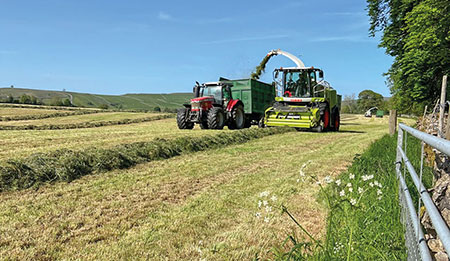
The poor harvest and high costs of 2023 left Harry with a “-£15,600 black hole”. After investigating the various SFI and CS options available, he has decided to make 2024 the last year in which he will crop the entire farm.
“I am de-risking the business because I cannot have another £15,000 hit. By going into environmental schemes, I am not exposed to the markets, I’m not exposed to cabbage flea beetle, I’m not exposed to climate change and I will have a much steadier income stream.”
Less productive land will go into CS Mid-Tier schemes, replacing break crops with a combination of grass margins and wildflowers. Only 125 acres of the farm will be cropped with wheat, the remainder – 60% – will be in environmental schemes.
It is not a situation that fills Harry with joy: “I don’t think the government or the public have woken up to how things are going to change. The government have put out these schemes and at no point is food production mentioned.
“There are predictions that by 2027, we will be growing 75% less wheat. I think it will be around 50% less food, but that’s still a massive amount. Where is the food going to come from?
“I do wonder if this will really be a five-year scheme or will we get another government in that says: ‘We have too much farmland resting and maybe we should review this’.”
While food security seems only now to be creeping onto the government and public’s radar, the debate between farmers is getting more and more vocal – some may say polarised. A call by Farmers Guide for reaction from the farming community to this issue received a heated response.
Strong voices in favour of food production
Among the respondents was Cornish farmer Roland Eustice. His response read: “I’m not going to take land out of production. I don’t agree with it, and I never will.”
Somerset farmer Philip Hall added: “We are cutting our cow numbers to accommodate our new CS and SFI schemes, and shedding staff. Our output will drop as a result.”
Beef farmer Claire Stretton, who farms in Dorset, offers her own opinion: “I have a beef suckler herd and I need every inch of land for grazing so to enter a grant-based scheme is not an option. It would cost me more in the long run.
“It is ridiculous what the government is doing. I have a massive issue with the way the government is telling us how and when we can farm.”
Claire uses the example of government restrictions on the application of manure. “They [the government] are telling us when we can spread manure, not taking into account the weather. Everyone in farming knows we farm according to the weather.”
And for arable farmer Rob Smart, who farms in the productive Cambridgeshire Fenlands, there is just no sense in turning over part of his arable land to natural habitat.
Speaking on the Farming Social Hub podcast, Rob said: “The government seems to think they can write new policies and rules and we do our best to comply, but we ask ourselves ‘have they ever been on a farm’?
“We can’t get excited about conservation here. This land was reclaimed in the 1700s to grow root crops and cereals so if you were to put anything back into natural habitat, you would just get a field full of thistles and reeds. We produce some of the highest yields in the country and we have 70 million people who all need feeding. I believe that is why I am here.”
A different viewpoint
For every farmer that feels their job is food production, there is a counter viewpoint that says improving the natural habitat is as much a farmer’s responsibility as feeding the nation.
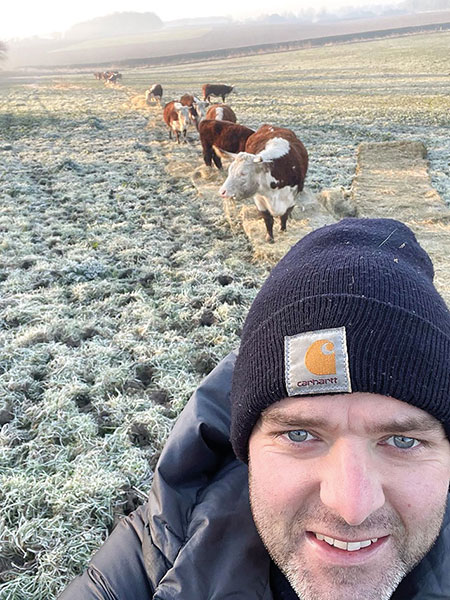
Tom Gurney farms in North Norfolk and heads up the River Mun Catchment Group, a cluster of 10 farmers. This land is mainly arable, growing potatoes and wheat, but the group is exploring ways to introduce more biodiversity onto the land. Over the past few years, Tom has noticed a change in attitude among his farming neighbours.
“There is a mix of opinions. I think 5–10 years ago we wouldn’t have got our cluster group off the ground. Now there is both the carrot and the stick and people are generally changing their view, or at least they are open to finding out a bit more.
“We all agree that even the most productive farms have areas that consistently under-perform and need to be flogged really hard to produce much, and obviously at a lower margin. We are currently being offered cash to take those areas out of production and use them for the good of the environment.”
The River Mun Catchment Group’s farming cohort is a microcosm of the current debate. Members range from a farmer who is turning arable land into a wetland through to a farmer who declares that he has “never taken a penny of government subsidies, and never will.”
Confusion all around
While many farmers know exactly where they sit in the debate, for a large majority, there is confusion and concern about the future.
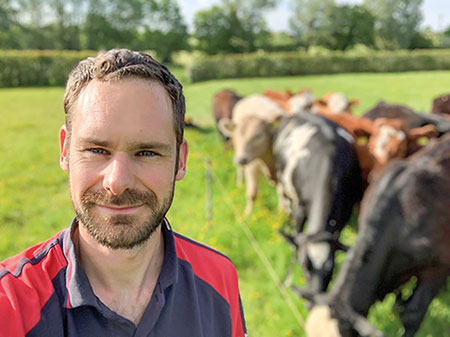
Richard Heady is an arable and livestock farmer from Buckinghamshire. He says: “I don’t feel at all confident in the direction I should be taking our farm. My heart is telling me to grow food, and persevere with legume break crops even though yields are extremely variable, and margins often non-existent. My head is telling me to stick a third of the farm into the SFI and claim the reliable annual payments.”
While Richard welcomes SFI payments for cover crops and buffer strips, he says he is uncomfortable with removing large areas of quality land from food production. He sees SFI options encouraging good practice such as companion cropping but financially he cannot see a way of getting near the levels of payment offered under BPS while actively farming the land.
And he echoes the point raised by Harry Metcalfe: “I worry about the longevity of the scheme, with a likely change of government, and many worthy departments banging on the door of the Treasury for extra funding, will it last longer than three years?”
Piecemeal information adds to confusion
In Cumbria, a group of independent farmers forming the Orton Fells Farm Cluster (OFFC) has been grappling with Defra’s changing SFI guidance.
Speaking on behalf of the OFFC, Jane Lane, a founder member, says: “The piecemeal delivery of information on the new agri-environment grant scheme opportunities has and continues to make it difficult for farmers to make firm decisions about what options to sign up to.
“The frustration that this causes was exacerbated by the recent changes in payment rates for several CS options. Farmers who had already signed up for new agreements late last year felt they had been misinformed.
“Although Defra has assured farmers they can change to new CS and/or SFI agreements, this will involve more paperwork and costs.”
One specific issue has been raised by Cumbria Farm Environment Partnership adviser Paul Arkle, who works with the OFFC. It centres around the UP2 option to help conserve upland waders.
Paul says: “The UP2 payment is still lower than the less-committing GS5 Very Low Input Grassland option and, particularly, the new SFI LIG2 action. As it is now, there is still little incentive for upland farmers to agree to measures that will help to protect breeding farmland birds. Several farmers who are coming to the end of their CS Mid Tier agreements are likely to want to apply for GS5 now and abandon the UP2 option.”
Paul highlights the added risk that the higher-value GS9 option may become over-subscribed and applied to areas with only limited potential to benefit breeding farmland birds.
Navigating the current landscape
The OFFC has come together out of a common belief that farming for food and nature recovery can go hand-in-hand. However, says Jane Lane, there is concern about the future of the traditional upland farms that have been producing food for centuries.
“Upland farming is predominantly made up of small independent family farms which form the bedrock of our communities. I recognise the challenges of working with a host of small farmers but there are some really forward thinking groups and networks who are keen to engage with government to assist on delivery.
“It would be tragic to see the demise of small farms in the rush to achieve high level environmental delivery, which is far easier to achieve at scale. It may be more challenging to deliver but to see real landscape change requires working from the bottom up. We need to support farmers and help them adapt to meet these new, broader ranging requirements for land management and sustainable food production.”
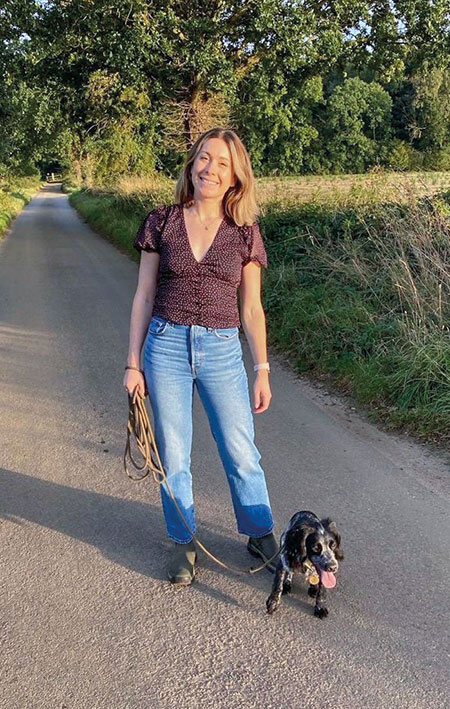
Like Paul Arkle, Charlie Ennals is another farm adviser trying to help farmers navigate the current landscape. She splits her time between working as an independent advisor in Norfolk, and as an agricultural adviser for regenerative food and farming company Wildfarmed. Her experience reflects the current state of the sector.
“Our Wildfarmed-contracted farmers are very much up to speed on SFI. Some need help with exactly which actions to go for but on the whole they understand what will work for them,” says Charlie. “However, across a wider community, there are still a lot of people that have not looked at SFI and are distrustful. It worries me that some of these farmers will get left behind. I would add that there is some concern about food security in the farming community.”
Across the sector the question about the purpose of farming continues unabated. No farmer has expressed a desire to be a park ranger but when the most financially stable option is to put productive arable land into environmental schemes, then you have to wonder how history will judge these latest government interventions.
Read more arable news.
